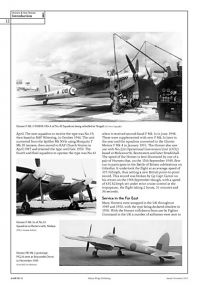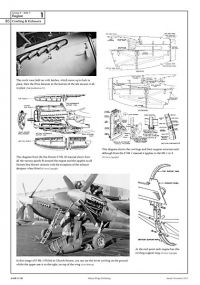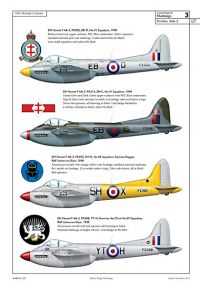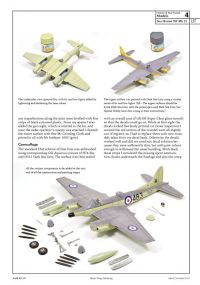Valiant Wings Publishing | Airframe Album 8: The de Havilland Hornet & Sea Hornet
Reviewed by Kevin Futter
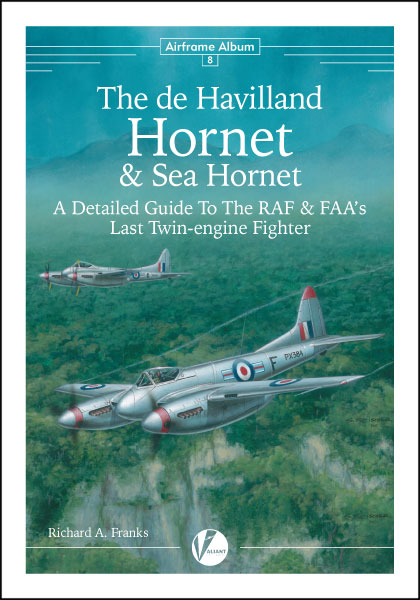
Valiant Wings Publishing has just released the eighth instalment in their Airframe Album series, entitled The de Havilland Hornet & Sea Hornet: A Detailed Guide To The RAF & FAA's Last Twin-engine Fighter. In common with previous titles in the series, this one is authored by Richard A. Franks, a well-known name in modelling and aviation publishing.
The first thing that strikes you with this book is the terrific cover art by Seweryn Fleischer. The presentation of material in this book is impressive throughout. Photographs are generally clear and crisply reproduced, as are the isometric line drawings by Wojciech Sankowski. The colour profiles by Richard Caruana are handsomely rendered.
The content itself is organised into four main sections plus an introduction and appendices:
- Introduction
- 1. Technical Description
- 2. Evolution - Prototype, Production and Projected Variants
- 3. Camouflage and Markings
- 4. Models
- Appendices
- I. Hornet & Sea Hornet Kit List
- II. Hornet & Sea Hornet Accessory & Decal List
- III. Bibliography
It should be evident from the list of contents alone that this title is aimed squarely at the modeller. There's plenty here for aviation enthusiasts and Hornet & Sea Hornet aficionados too, but the emphasis is on providing the modeller with copious data and as much detail as possible.
The Technical Description section of the book is packed with period photographs, technical drawings and contemporary restoration images. The airframe is covered pretty comprehensively from nose to tail, with special emphasis on those areas of the most interest to modellers: cockpit and engines.
The section on the evolution of the airframe gives a concise but very clear overview of the development of the Hornet from the initial prototypes, right through to the final production variants, including the Sea Hornet of course.
The Camouflage and Markings section covers the type's use by the RAF (Hornet) and FAA (Sea Hornet). A decent selection of period photographs, including several in colour, is accompanied by nine pages of colour profiles.
I'd like to see larger versions of some of the photos, but that's a perennial constraint that all aviation publications have to deal with, and hardly a criticism.
The final of the main sections of the book features two model builds, one each in 1/72 scale and 1/48 scale. The first is by Libor Jekl, and utilises the Special Hobby 1/72 Sea Hornet NF Mk 21. Libor does an excellent job with this kit, and it's an impressive build of a challenging kit.
The second build is by Steve Evans, and features the Trumpeter 1/48 Hornet F Mk 1. As expected, this is another fine model build, and the finished article in high-speed silver looks terrific.
I would like to have seen a build article featuring the HpH Models 1/32 kit, but the author notes that its resin nature and relatively high price tag restricts its appeal. It's a shame, but understandable. It does make this section a little light compared to other titles in the series, however.
The final section is the Appendices, and these follow the customary pattern for this series of books, in outlining what options the modeller has in terms of kits, accessories and decals for producing a scale replica Hornet (or Sea Hornet). Only the HpH kit is listed for 1/32 scale or greater, of course.
The book rounds things out with a bibliography of existing titles covering the Hornet/Sea Hornet, which serves as a handy launch pad for further research into the type.
Here's a small selection of sample pages, courtesy of Valiant Wings:
Conclusion
This is a detailed, comprehensive and modeller-friendly title. If you're building, or intend to build, a model of the de Havilland Hornet in any scale, this book will prove invaluable, and I highly recommend it.
Thanks to Valiant Wings Publishing for the review sample.
© Kevin Futter 2015
This review was published on Monday, November 23 2015; Last modified on Sunday, December 09 2018

